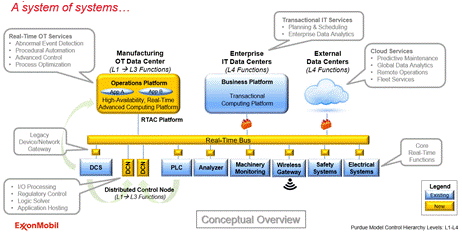

Historically, upgrading distributed control systems (DCS) has involved moving from an earlier generation of system to the current state of the art. While this sounds straightforward, the process of migration has gotten more complex as more options become available. Distributed control system migration could be the biggest single issue many automation end users face today.
The dynamics of control system migration have changed since ARC first started looking into this area more than two decades ago. Today, many businesses require an even stronger value proposition and justification for migration projects than in the past. In addition, many technologies surrounding the traditional DCS have been changing. The digital transformation trend has introduced elements such as the “The cloud”, “edge computing”, “analytics”, and “Industrial IoT” to name only a few. Many end users are faced with the question of whether these new available technologies will deliver significant benefits to their control system upgrade decision.
Several years ago, faced with a huge installed base of distributed control systems rapidly approaching obsolescence, ExxonMobil started an initiative now managed by the Open Group, the Open Process Automation Forum (OPAF). ARC has written extensively about OPAF. This initiative is focused on developing new, more “open” standards-based process automation systems that can “age in place,” to avoid future obsolescence. OPAF also looks to many aspects of digital transformation to make it happen.

Process automation suppliers continue to expand their migration offerings. Many have joined the OPAF to not only help the end users that are driving the initiative, but also to protect their future business in process control systems.
Process manufacturers can use a number of different approaches when evaluating potential migration suppliers. For many, automation system migration represents a significant change. One thing end users should consider is the potential supplier's ability to provide a solution that will provide real business value, while minimizing downtime and risk. No matter how smooth the implementation may have gone, if you simply end up with a functional replacement, you failed to exploit an excellent opportunity to improve plant and business performance. It’s important for end users with automation systems facing obsolescence to consider many of the aspects of the OPAF movement, as well as the functionality brought on by new digital technologies available today.
ARC advocates a rigorous team approach that begins with a well-defined strategy and business goals. Developing and weighting the decision criteria for the control system in an impartial, fact-based manner will significantly improve the ultimate selection of a migration supplier. ARC has developed an effective methodology for doing so.

